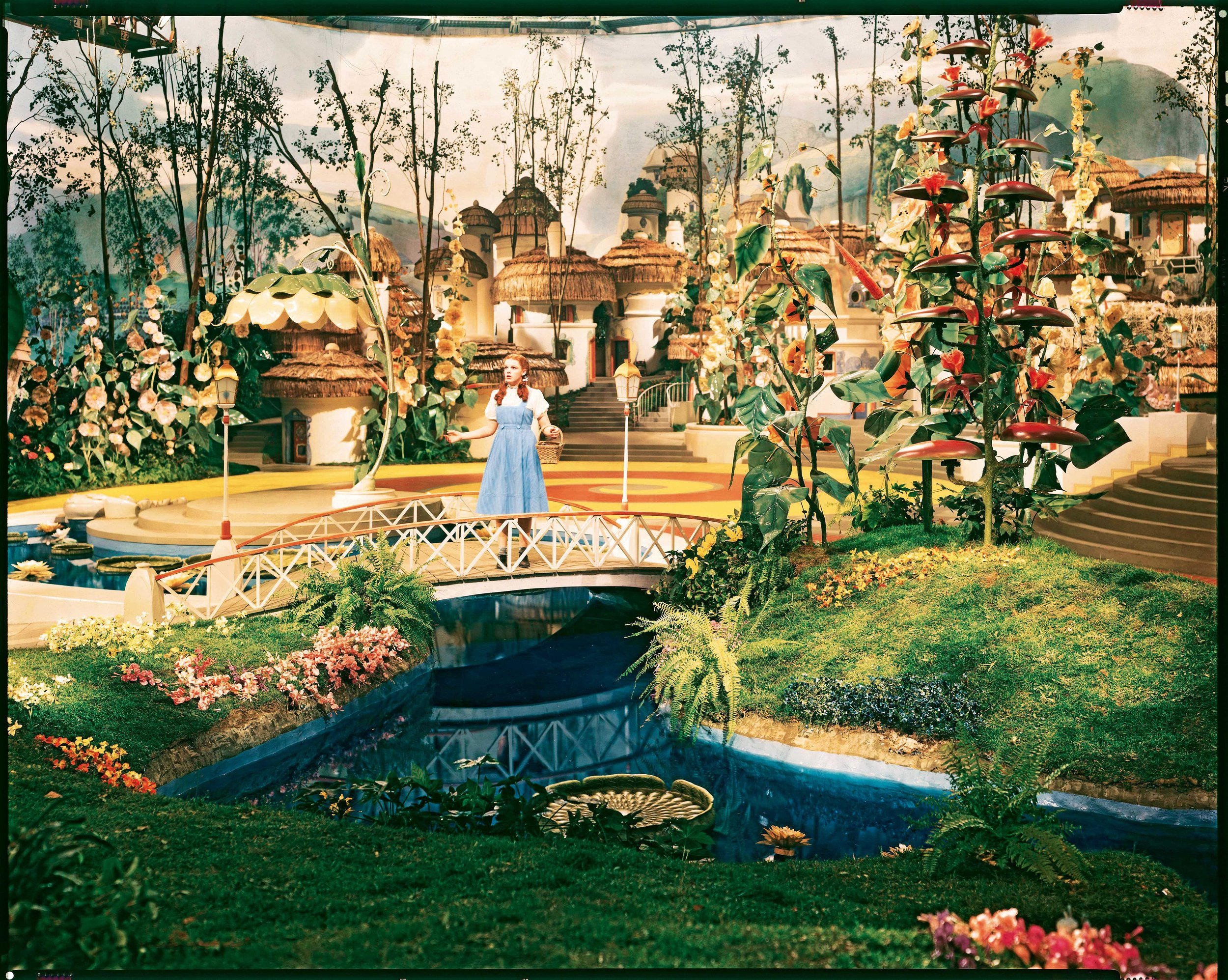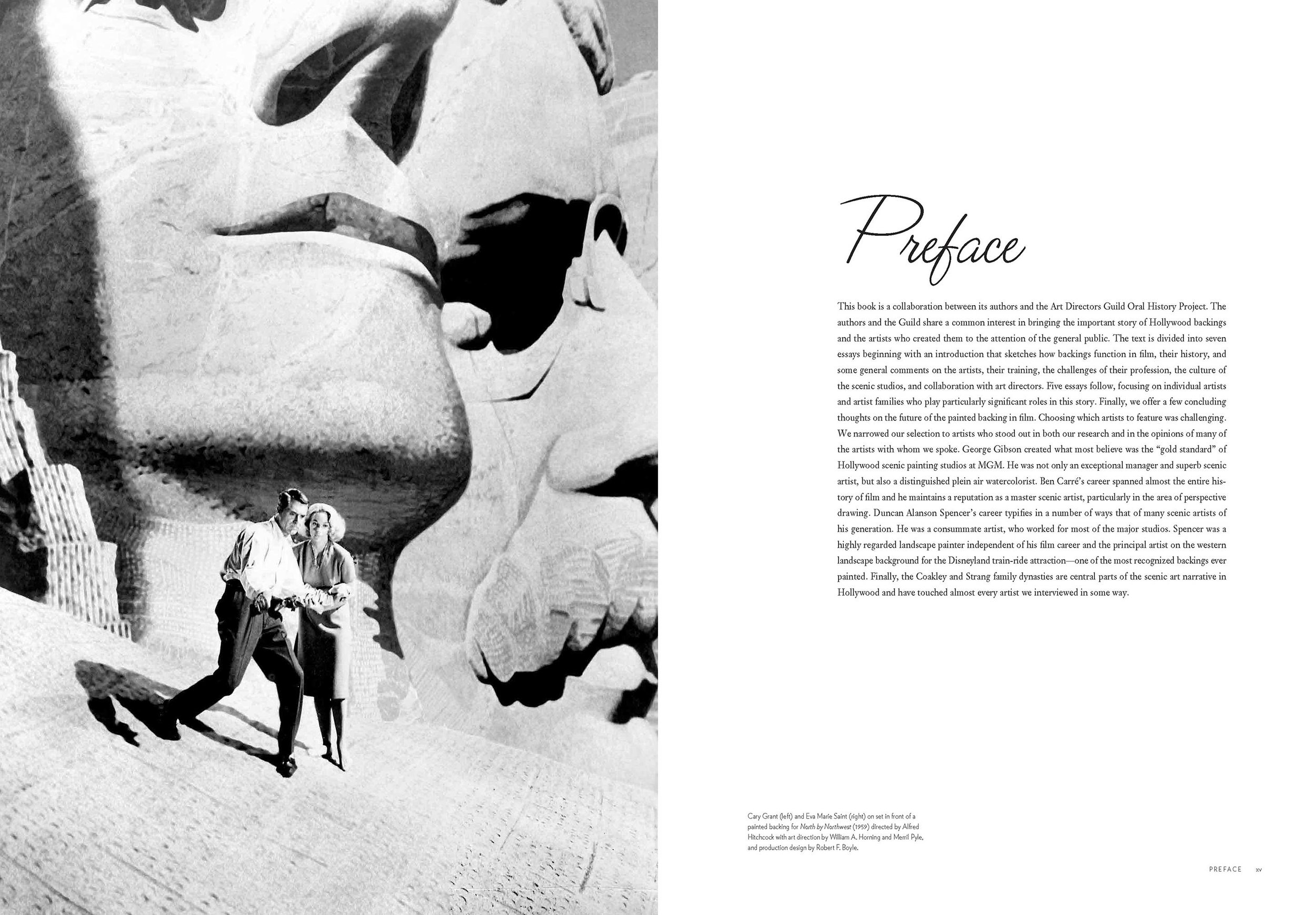About
The definitive behind-the-scenes history of one of Hollywood’s most closely guarded cinematic secrets finally revealed—painted backdrops and the scenic artists who brought them to the big screen.
Published by Regan Arts.
In almost every feature film of Hollywood’s golden age, from Wizard of Oz to North by Northwest to Cleopatra to The Sound of Music, painted backings have convinced moviegoers that what they are seeing—whether the fantastic roads of Oz, the presidents of Mount Rushmore, or ancient Egyptian kingdoms—is absolutely real. These backings are at once intended to transport the audience and yet remain unseen for what they really are. The Art of the Hollywood Backdrop reveals the hidden world and creators of these masterpieces, long-guarded as a special effects secret by the major studios such as MGM, Warner Brothers, Universal, Columbia, 20th Century Fox, and Paramount.
Despite the continued use of hand-painted backings in today’s films, including the big-budget Interstellar and Lemony Snicket's A Series of Unfortunate Events among many others, digital technology is beginning to supplant the art form. In an effort to preserve the irreplaceable knowledge of scenic masters, Karen Maness and Richard Isackes have compiled a definitive history of the craft, complete with interviews of the surviving artists. This is a rich undiscovered history—a history replete with competing art departments, dynastic scenic families, and origins stretching back to the films of Méliès, Edison, Sennett, Chaplin, and Fairbanks.
-
Richard Isackes holds a distinguished reputation as a stage designer in regional theatre, opera and television. He has twice been the recipient of the Boston Circle Critics award for best scene design for his productions of Translations and Uncle Vanya at the Huntington Theatre. A partial listing of other companies where his work has been produced include: The Opera Theatre of St. Louis, Chicago Lyric Opera, Alabama Shakespeare Festival, Cincinatti playhouse in the Park, The Hartman Theatre Company, La Mama Theatre of New York, Boston Lyric Opera and the Charles Playhouse. Isackes has also designed scenery for CBS, PBS and NBC.
Isackes has served on the faculties of Bucknell University, Boston University and the University of Illinois, where he was recipient of the prestigious University Scholars Award. Isackes has been a board member of the National Association of Schools of Theatre and the University Resident Theatre Association; additionally he has been elected to membership in the National Theatre Conference. He currently holds the Joanne Sharp Crosby Chair in Design and Technology at The University of Texas at Austin, where he held the administrative position of chair of the Department of Theatre and Dance for eight years before returning to the faculty in 2006.
-
Karen Maness is a visual artist, designer and educator with thirty years of painting and fabrication experience for the entertainment industry. Assistant Professor of Practice with The University of Texas at Austin Department of Theatre and Dance, The School of Design and Creative Technologies and Associate Director of the Texas Performing Arts Fabrication Studios, her courses build upon a culture of encouraging risk-taking, academic rigor, excellence in execution and mutual respect. Maness has worked extensively in theatre, themed attractions, industrial display and music tours teaching master classes in the U.S.A. and abroad. Maness is a proponent of digital-analog fluidity for artists and hands-on, project-based, interdisciplinary team collaboration. She believes the future of education and innovation lies in the spaces between disciplines, actively exploring these concepts through emergent pedagogy projects in design and fabrication. She has dedicated her life's work to developing future artists and the preservation of painting knowledge as a key to visual storytelling. She is the co-author of the award-winning The Art of the Hollywood Backdrop, the definitive behind-the-scenes history of Hollywood's motion picture scenic art. Her studio practice includes public art, exhibitions, corporate and private commissions.









